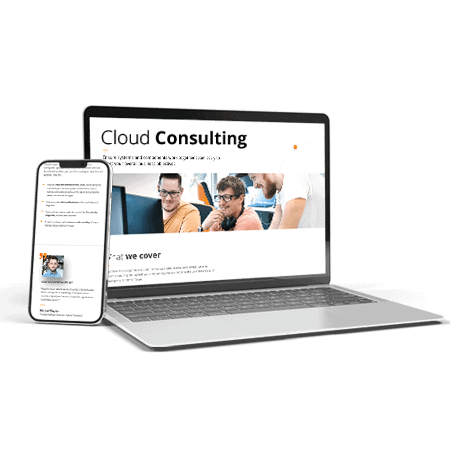
How to migrate from Google Cloud to AWS?
Thinking about migrating from Google Cloud to AWS? This quick guide walks you through the essentials to help you switch with confidence and minimal disruption.
Why would a business migrate from Google Cloud to AWS environment?
Many businesses choose to change their cloud provider and, for example, move from the Google Cloud Platform to AWS for strategic reasons that align with their growth and performance goals.
One of the primary motivators is AWS’ environment’s expansive suite of services, which caters to a broader range of enterprise needs. With a larger global infrastructure footprint, AWS often delivers lower latency and superior performance, especially for businesses with a global customer base.
Additionally, the vibrant AWS ecosystem – rich in community support, third-party integrations, and certified experts – makes it easier to find guidance and solutions tailored to specific challenges. A significant factor in this shift is the greater availability of professionals with AWS expertise compared to those skilled in Google Cloud, as AWS competencies are more prevalent among engineers in the market.
AWS’s flexible pricing structures, Saving Plans, reservations, tiered storage, as well as special offers and incentives, can help companies optimise their budgets.
In many cases, this transition allows businesses to streamline their cloud infrastructure while unlocking greater agility, scalability and resource utilisation.


We use these tools to proactively create AWS Cloud saving plans for the client who now saves up to 50% a month!
What are the cost implications of Google Cloud to AWS Cloud migration?
GCP (Google Cloud Platform) to AWS migration involves upfront investments, but the long-term savings and benefits often outweigh the initial costs.
By leveraging built-in cost management tools like AWS Cost Optimization Hub, AWS Cost Explorer and AWS Budgets, organisations can gain insights into usage patterns and identify opportunities for optimisation. Ultimately, while the initial cloud migration requires planning and resources, the move often results in more predictable and efficient long-term operations within the AWS Cloud.
Read more about AWS cost optimisation:
- AWS cost reduction: a guide to lowering your cloud bill
- Cloud cost optimisation: how to reduce your cloud expenses and maximise ROI?
- Cloud Cost Optimisation services – save as much as 70% on your cloud infrastructure!
What are the biggest challenges in migrating from Google Cloud to AWS?
Migrating to a new cloud provider like AWS comes with its own set of challenges, but each one can be addressed with proper planning and tools.
Here are key challenges along with strategies to mitigate them:
Migration complexity
Moving applications and services to other cloud providers can be technically demanding and time-consuming. To mitigate it, break the migration into smaller phases and use services like AWS Migration Hub for better tracking and coordination.
Downtime risks
System downtime during migration can impact operations and user experience. To mitigate it, schedule migration during low-traffic hours, implement failover strategies, and conduct dry runs before going live.
Skill gaps
Teams may lack experience with AWS architecture and tools. To overcome this issue, invest in AWS training or partner with certified migration experts and cloud architects to guide the transition.
Compatibility issues
Not all GCP services have direct AWS counterparts. Make sure you evaluate service mappings early, and refactor applications where necessary to fit into the AWS environment.
Cost overruns
Without proper oversight, migration costs can escalate quickly. You can, however, use AWS pricing calculators and monitoring tools to manage and control expenses throughout the project.

How to migrate from GCP to AWS?
A successful migration from Google Cloud Platform to AWS involves a structured and well-orchestrated approach.
Here’s a step-by-step breakdown:
Assessment and planning
Begin by analysing your current workloads, usage patterns, and dependencies. Establish clear goals for your migration, whether it’s performance, cost reduction, or modernisation. This phase also includes reviewing application architectures and mapping them to AWS equivalents.
Selecting the right AWS services
Explore AWS resources to find the best fit for your current infrastructure. Use AWS documentation and expert consultations to align services with your business operations and needs. Be mindful of differences in networking, storage, and compute options between platforms.
Data migration
For effective data migration, choose the strategy that best suits your needs. For small datasets, manual export/import might work, but it’s important to handle any sensitive data with extra care, ensuring encryption and secure transfer protocols are in place.
For larger or more complex data environments, tools like AWS DataSync, AWS DMS (Database Migration Service), or AWS Snowball offer efficient and secure transfer options that minimise disruption and support compliance requirements.
Application migration
Replicate your application architecture on AWS using services like Elastic Beanstalk, ECS, or EKS for containers. If you’re migrating virtual machines, leverage AWS Server Migration Service or Application Migration Service (MGN) for automated, real-time replication.
Testing and optimisation
Thorough testing is essential before the final cutover. Validate performance, integration, and compatibility of all systems. Fine-tune configurations based on test results to ensure peak performance and security.
Final cutover and validation
After successful testing, execute the final migration with minimal downtime. Closely monitor systems to ensure data integrity, application availability, and user accessibility are fully intact.
Post-migration optimisation
Once you’re live on AWS, focus on refining your setup. Use tools like AWS Trusted Advisor to optimise cost, security, and performance. Implement robust backup solutions, ensure high availability, and establish a comprehensive disaster recovery plan to safeguard your data and applications.
Adopting monitoring best practices will help you maintain a resilient cloud computing environment, ensuring your systems remain secure and performant in the long run.
What AWS tools are useful for migrating from Google Cloud?
AWS provides a comprehensive set of tools to simplify and accelerate the move from GCP:
- AWS Database Migration Service (DMS) – use to seamlessly migrate databases across platforms with minimal downtime.
- AWS Server Migration Service (SMS) – use to automate the migration of virtual machines to AWS.
- AWS Snowball – use to transfer large-scale data physically for faster, secure delivery.
- CloudEndure Migration – use for real-time workload replication for fast cutovers.
- AWS DataSync – use for high-speed data transfer from GCP or on-prem to AWS storage.
- AWS Data Pipeline – use to orchestrate and automate data movement and transformation.
- AWS Application Discovery Service – use to identify app dependencies and resource usage for planning.
- AWS CloudFormation – use infrastructure as code to deploy consistent environments.
- AWS Migration Hub – use to centralise migration progress tracking and management.
- AWS Well-Architected Framework – use to follow best practices to build a robust and cost-effective environment.
In addition to these, AWS offers a wealth of whitepapers, tutorials, and partner solutions to guide your team throughout the transition.

Cloud Cost Optimisation – pay a fee only on savings!
Many of our clients see a return on investment within the two-week assessment, with savings of up to 70% on cloud costs thanks to our AWS Partner statuses.
How can businesses minimise downtime during migration?
Reducing downtime is crucial to maintaining service availability and customer trust. Start by using real-time replication tools such as AWS Application Migration Service or CloudEndure to sync workloads before cutover. Perform staged migrations beginning with non-critical workloads to minimise risks.
Create thorough test environments that mirror production to validate functionality before going live. Use load balancers and failover setups to keep services running during the switch.
Lastly, communicate transparently with internal teams and external stakeholders about scheduled maintenance or brief interruptions to set expectations and reduce disruption.
How can Future Processing help with GCP to AWS migration?
Migrating from GCP to AWS is a significant but rewarding undertaking that can enhance your organisation’s agility, scalability, and efficiency in the cloud. With the right planning, tools, and support, your business can make the transition smoothly – while reducing risks and unlocking new opportunities for innovation.
At Future Processing, we specialise in providing expert migration services tailored to your unique business needs. Our team will guide you through every step of the migration process, from initial assessment and planning to the final cutover, ensuring minimal disruption and optimised performance.
Ready to take the next step? Start planning your migration today and build a future-ready foundation on AWS with confidence. Get in touch!




